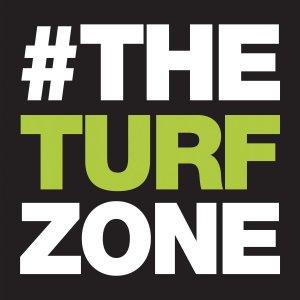The Turf Zone Podcast

Maryland Turfgrass Council – The Basics of Field Testing
MTC Turf News – Kyley Dickson, Ph.D. and John Sorochan, Ph.D.
This article was originally published in SportsField Management.
Athletic fields require maintenance whether they are natural or synthetic. The challenging aspect for athletic fields is that they change as a season progresses. One of the best ways to reduce injuries and increase performance is to have a consistent playing surface that is within acceptable ranges for athlete safety. Without regular field testing, it is hard to determine variances in playing surface consistency as use/wear increases. Knowing how a field is changing throughout the year can help field managers make data driven decisions to optimize the performance of the playing surface and in turn the safety of the surface for the athlete. Keeping records of different field properties across a season and years can help paint the picture for the field managers on what is also going on below the surface. Unfortunately, testing takes time and can be expensive, and these draw backs can lead to many overlooking the need to test a field. However, testing is another important tool to have in the field managers toolbox.
One of the main benefits of testing a field is it indicates consistency and characteristics of a field’s impact on athletes. Tests that are conducted give clues to the health of a field and help identify maintenance practices that are needed. While there are different testing criteria for natural and synthetic surfaces, there are shared tests beneficial for both. However, not all tests can be used on both types of fields. In determining what tests are needed for a surface, a few questions need to be answered: first, is it natural or synthetic; second, what sport or sports are played on the field; and lastly, what is the budget and time available for testing. This information will help determine what tests would be the most beneficial information for a surface. To start, some basic tests need to be established for field managers as a base.
The University of Tennessee Center for Athletic Field Safety (UTCAFS) has a suggested basic kit for natural and synthetic fields. Natural field basic test kit should include a soil moisture probe, a side soil profiler, and a rotational traction testing device. The cost for the components to buy new will range from $2,500 to $5,000 depending on which products are selected. On a synthetic surface the basic kit recommended is an infill depth gauge, surface temperature measuring device, and some type of rotational traction device. The costs for synthetic turf range from $850 to $1,000. All kit estimates are from price researching different suppliers’ websites and totaling the cost. The purpose of this article is not to promote one specific brand’s testing equipment, there are a variety of products available.
All testing done is a snapshot of that field at that particular time, the same test could be conducted the following week with different results being observed. That is why taking multiple readings in a year will give a more detailed picture of what is happening. The other key in getting a good snapshot is testing for the variables that have the greatest impact. Published research has identified a few variables that have been found to influence many parts of the field (Baker, 1991; Dickson et al., 2018). For natural grass fields, the soil moisture content of the field has been found to impact: surface hardness, traffic tolerance of grass, rotational traction/resistance, increase in soil bulk density when trafficked, head injury criterion, and translational traction (Baker and Gibbs, 1989; Baker, 1991; Dickson et al., 2018a, Dickson et al., 2018b). Soil type of a field is important, because soil moisture content will have a greater influence on the playability of a soil that is higher in silt plus clay than a sand based field (Dickson et al., 2018). While there are a multitude of tests for additional field performance para...






 Visit Podcast Website
Visit Podcast Website RSS Podcast Feed
RSS Podcast Feed Subscribe
Subscribe
 Add to MyCast
Add to MyCast